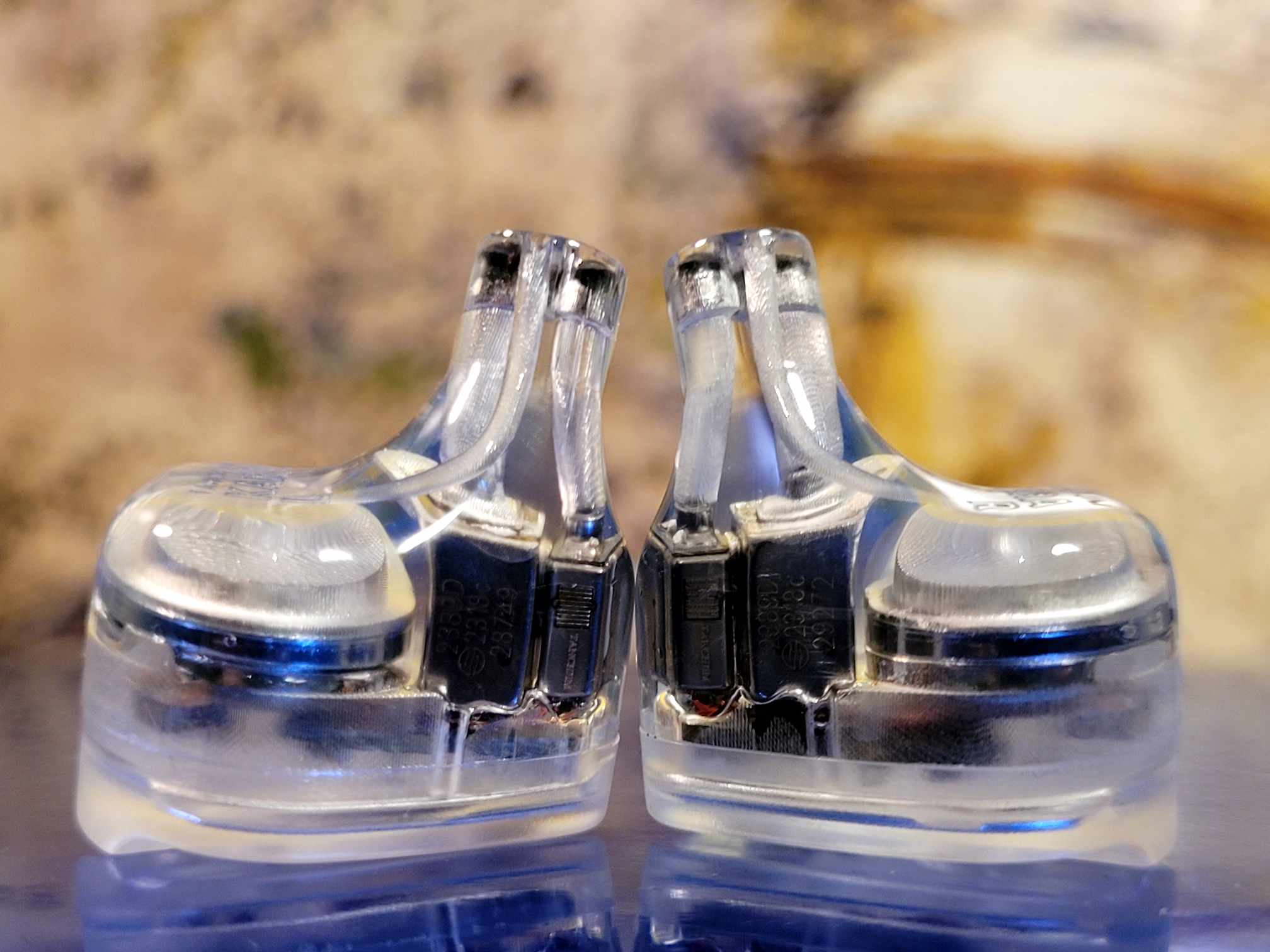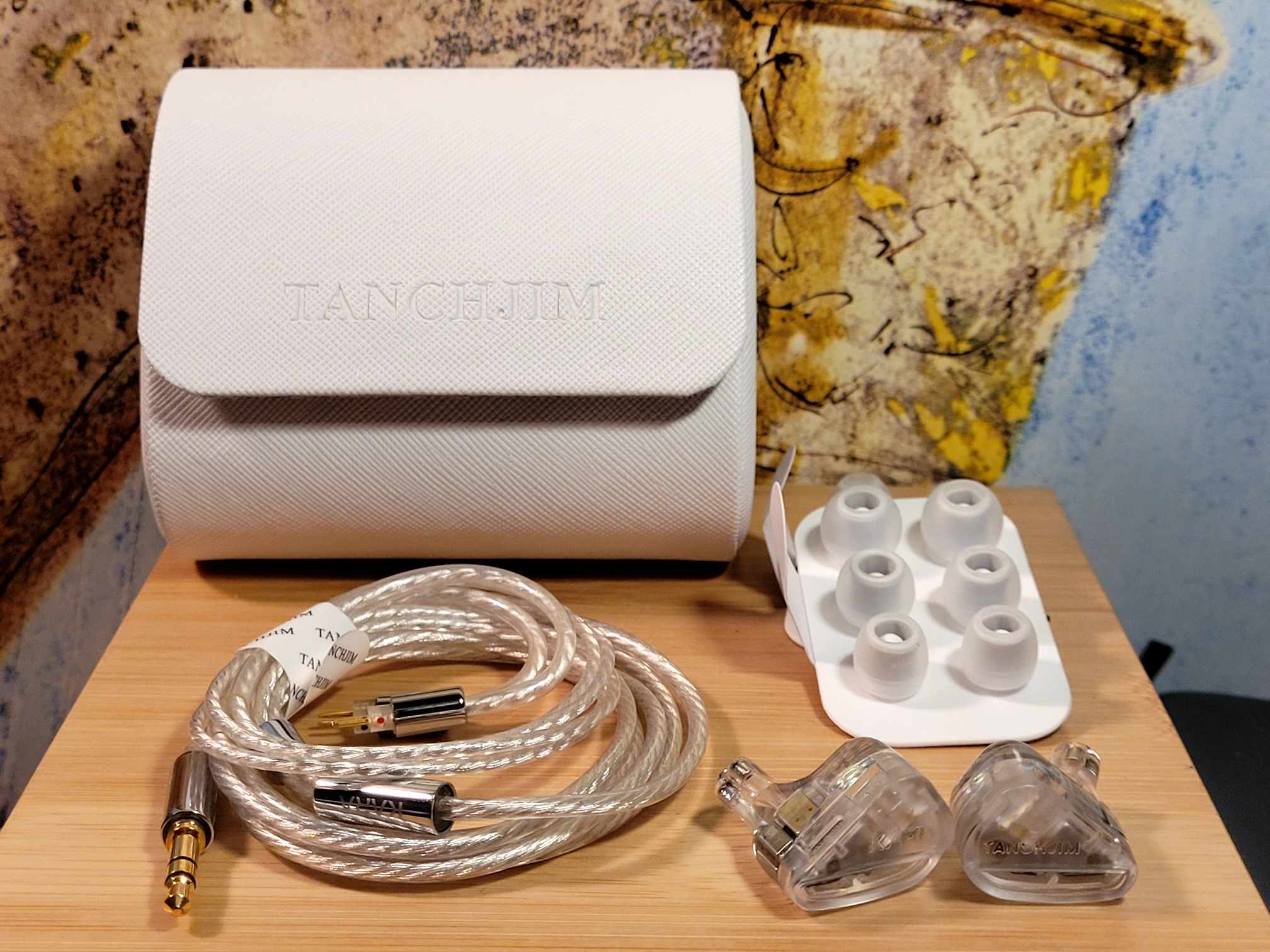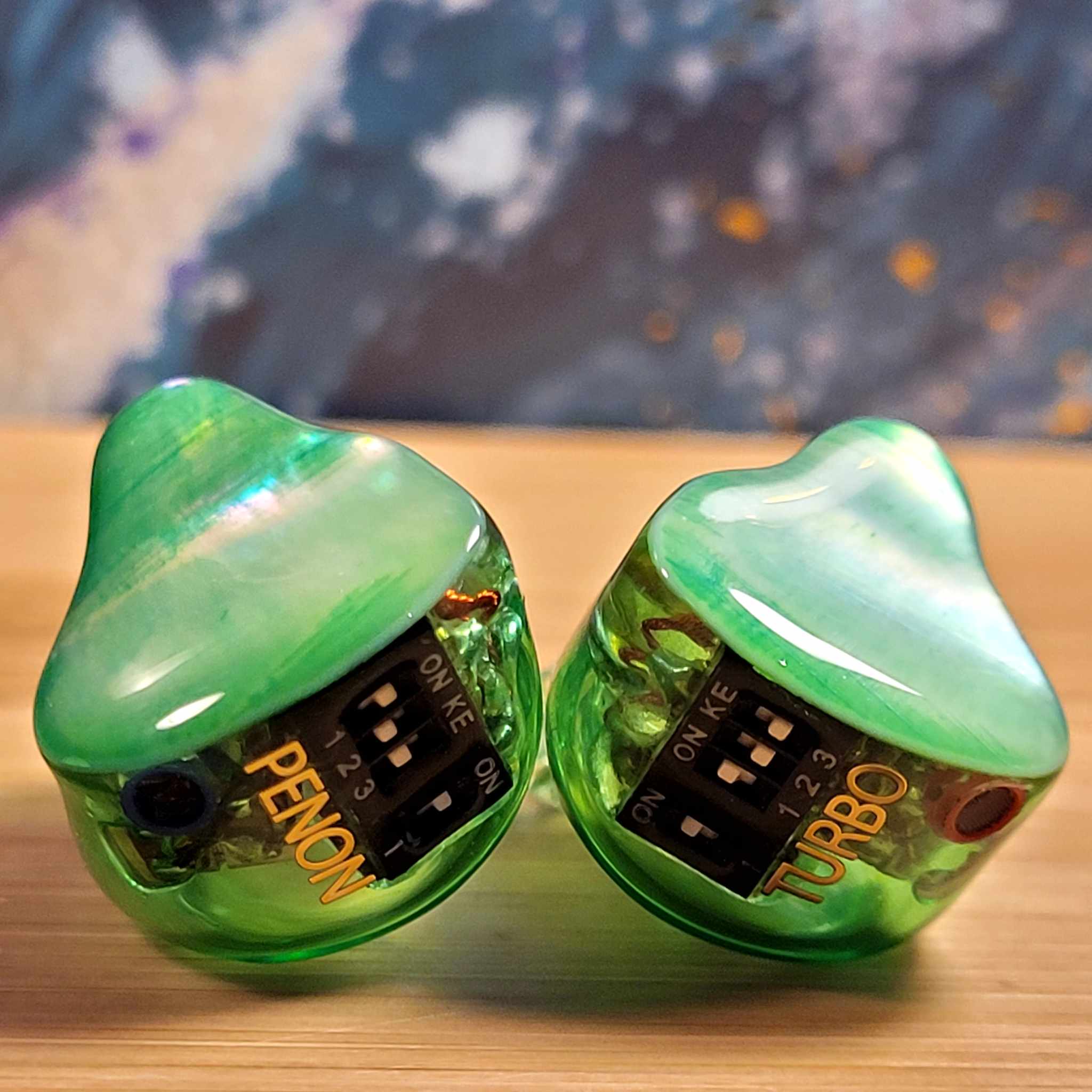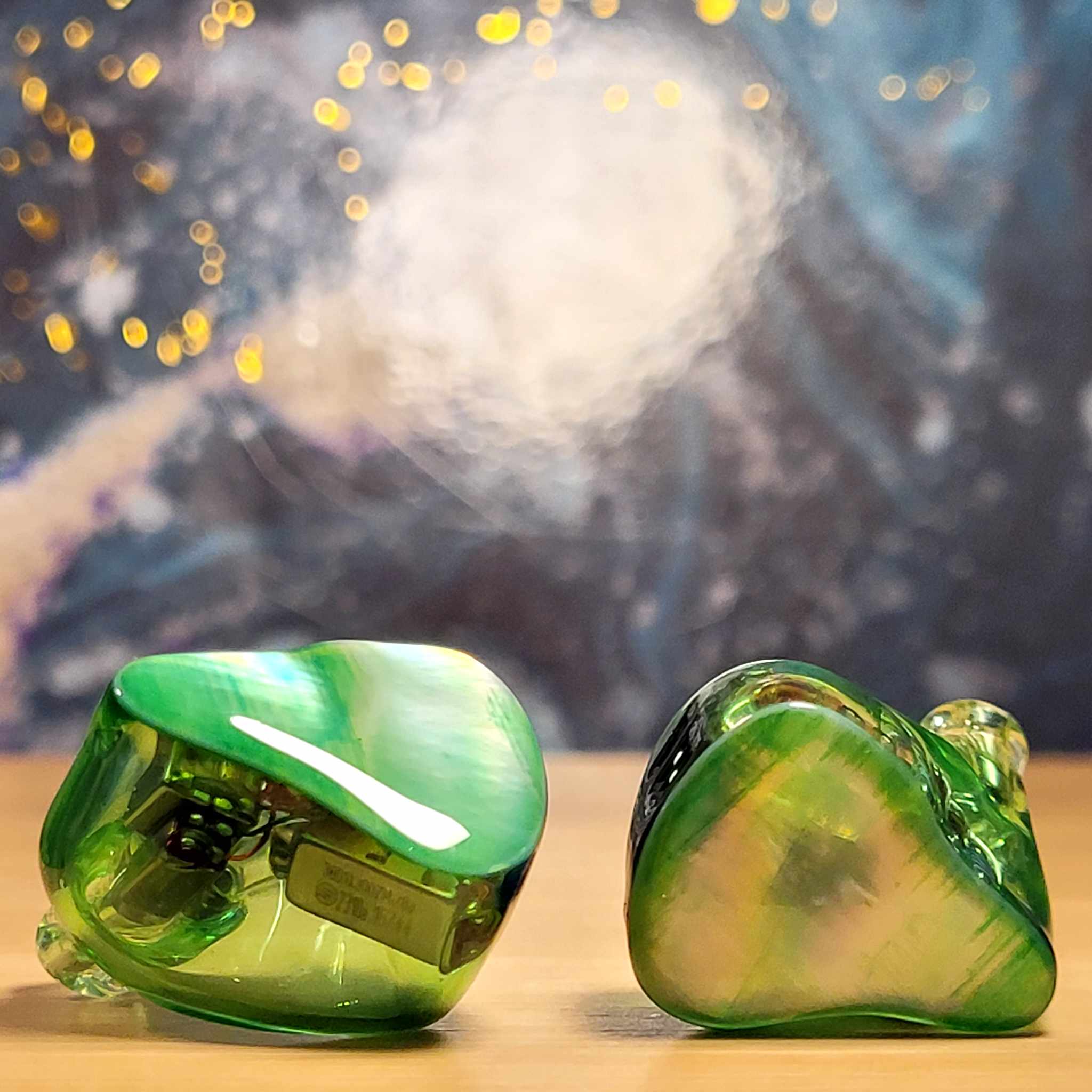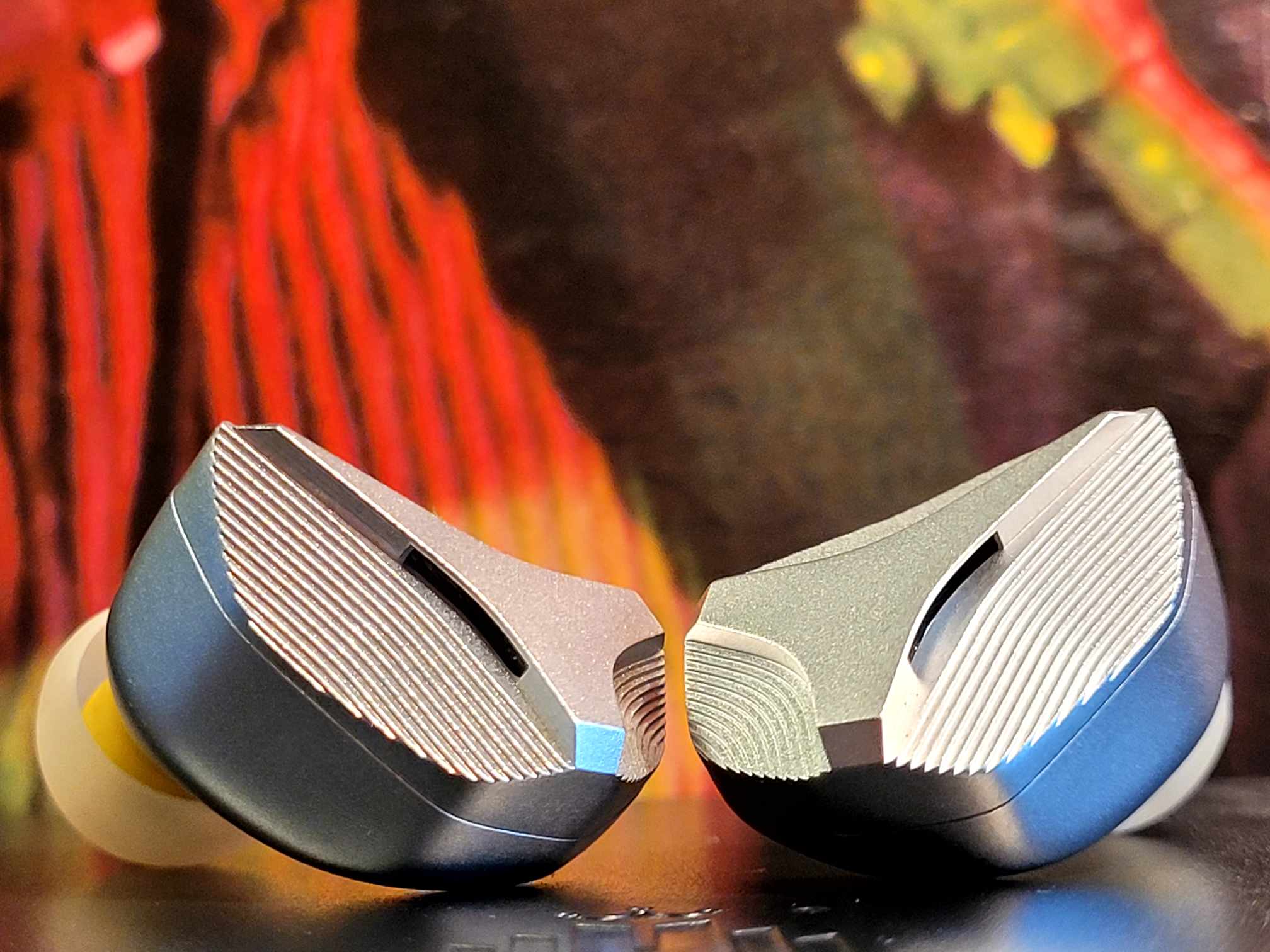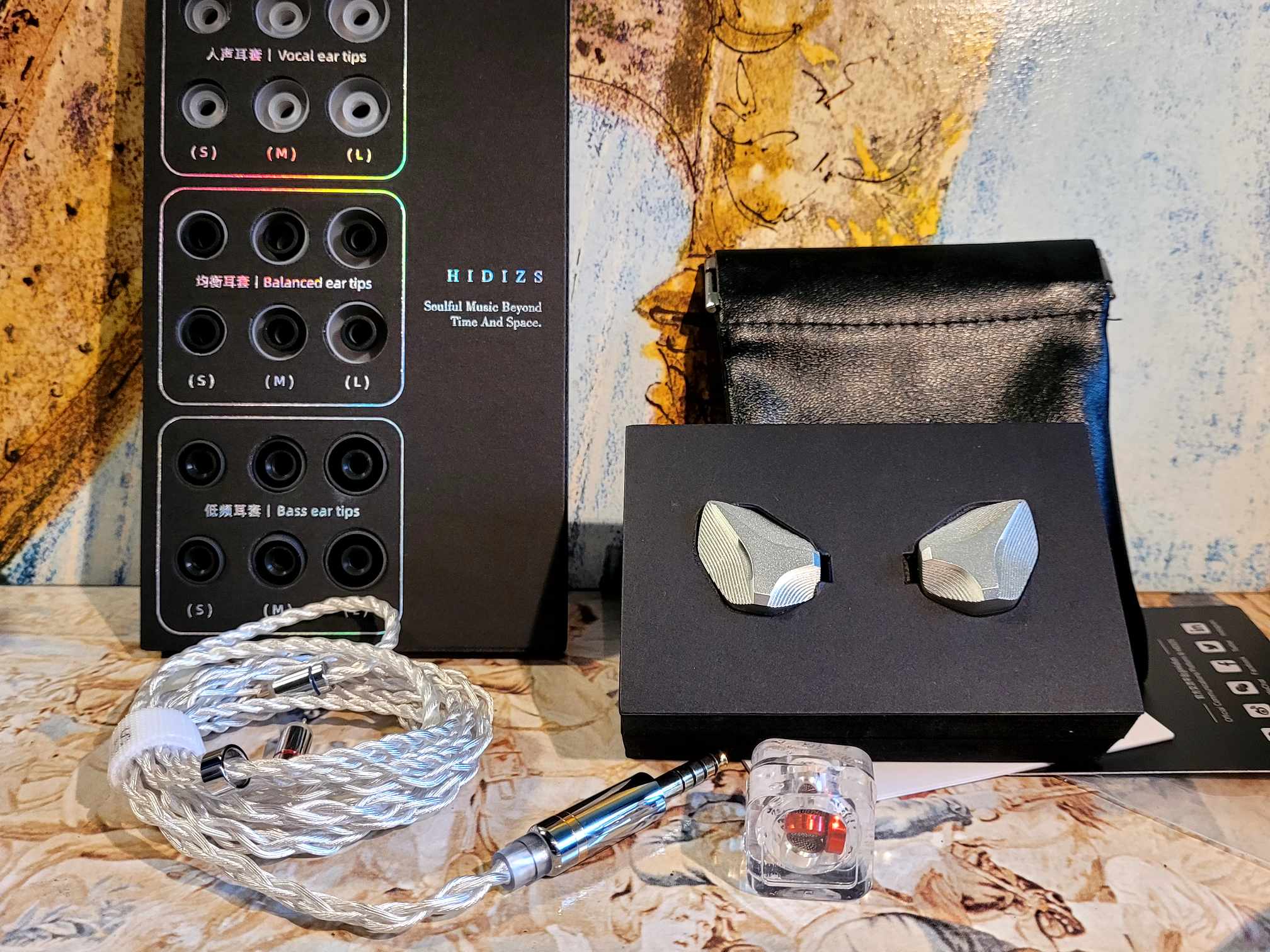TONALITY: 9.5/10
TECHNICALITIES: 9.2/10
TIMBRE: 9.6/10
SOUNDSTAGE: 9.8/10
IMAGING: 8.5/10
CONSTRUCTION: 9/10
SOUND VALUE: 8.5/10
INTRO
Hifiman don't need a lenghty introduction. It's an audio company founded in 2005 by Fang Bian, then named Hifiman in 2007. Their first planar headphones was the HE5 launched in 2009, then they evolve alot and create a wide variety of headphones, yet they seem to favor planar open back above dynamic driver or closed back headphones.
But Hifiman is a touch everything, and my personal story begin with their DAP in fact, the HM601 to be precise. It was a warm, bassy and very powerful sounding DAP with an construction that will make us laugh today. While DAP was an important part of their offering and R&D in the past, it seem nowadays they give greater focus to Headphones and DAC-AMP making. As well as some IEM like the very pleasant Svanar and even TWS IEMs like Svanar Wireless that push sound bundaries further with their implementation of R2R DAC-AMP in TWS shell.
In the past i've review a good amount of their Headphones which include the Ananda, Deva, Sundara and Arya to name a few. I always had a sweet spot for the Sundara musicality, the best Hifiman planar in term of high sound value in my opinion.
Today I will review their higher end headphones, the HE1000 Stealth.
Priced 1400$, the HE1000 Stealth use newest magnet with rounded shape that permit lower distortion and soundwave interference. They are double side at each side of the big planar diaphragm and offer a stable transient response.
This model is not to be counfound with older HE1000 V1 and V2, nor the HE1000se, which is pricier at 2000$.
I've tested a couple of TOTL headphone including Sennheiser HD820, Grado GS1000e, Arya Organic and Audivina, but never I've been as much impress by the musicality they deliver than with this HE1000 Stealth.
I will try to explain why in this review, while keeping my critical sound impressions sharp.
CONSTRUCTION&ACCESSORIES
The construction of these is sumptuous and mostly made of metal and wood with few plastic part. It's quite gigantic but you barely feel them on your head and the clamping force is very smooth.
What caught the eyes is certainly the oversized cups wich you will be familiar with since its extremely similar to Arya and Ananda.
Those cups are made of CNC miled metal with a smooth hand polished finish. The grill is made of metal too and it's thick one, not light alluminium prompt to vibration that could create unwanted distortion (like the Grado grill).
Their a filter mesh to avoid any dust entering this grill too.
Then we have the piece of thick wood, it's very eye appealing and pleasant to touch when we position the cups.
Then we have the real leather headband with a brushed metal holder with an angular shape i'm not the biggest fan in term of aesthetic but it's responsible for clamping force which is light and I hope it will not loosen more since we can't headbang or move our head down too fast with HE1000 Stealth, their a risk the headphones fall. Anyway, these headphones are thinked for sedantary use since it's fully open back and leak alot, i mean ALOT of sound. In fact, i often use the HE1000 as deskop speaker since it can play louder than my laptop. Without any distortion.

Now these weight half a kilogram, as said, I can wear these for hours and hours without feeling anyn discomfort nor neck fatigue. The leather head band is hard to even feel (unless your bald I guess). It's most comfortable headphones I own but certainly not something I will use in a coffeshop or workplace. Let say the comfort upgrade is sky high compared to the Sundara I own that have harder clamping force, smaller cup and can swivel left right like the HE1K.
Under those big cups you have 3.5mmm jack, it permit easy upgrade of the cables. It made of metal and i like the bump that permit fast blind finding of the jacks so you can plug cable easily even when wearing the hadphones.
Sure, those 3 cables included are quite practical and not plain bad, but they are 3 meters long and the shorter one is made of nylon fabric that tend to keep the bent and isn't very flexible, i would have prefer same material as to other.
We have a very welcome balanced XLR cable with a plug that screen quality and have gold plated pins. It's 3 meter. Soundwise its more than OK and i dont feel an urgence to upgrade the XLR cable, yet i will most certainly order new 3.5mm braided cable sooner than later.


The packaging is extremely minimalist and well, eco friendly since the box is recyclable and even the protective foam have second life as an Headphones stand. I respect this for sure, yet i dont think it honor the elegant beauty of HE1000. The nice carrying case included with way cheaper Ananda Nano is something I feel would have been more appropriate with a flagship headphones of thise price range. But we have generous amount of basic cable as stated. Strangely no 3.5mm single ended is a bit puzzling too. All in all, while the construction of Headphones is great, i find accessories a bit underwhelming in quality. I could had say I don't care as a reviewer, but i put myself in the skin of a consumer that pay 1400$ for those, in that regard the packagin experience isn't impressive. You don't feel like a spoiled prince.
SOUND IMPRESSIONS
Let's begin by stating what source I test this headphones with.
Main obsessive pairing was with Hifiman EF600 as a DAC-AMP as well as a standalone amp paired with Hiby R6proII and Ibasso DX90. Then I try with SMSL SU9+R6proII and while it was cleaner and crisper on top, the dynamic was lifeless and ultra lean, bass was punch less and weight less, everything was suddenly about treble and transparency. I pair it with Xduoo XD05plus too and it was a rather potent match but the less refined in term of timbre, resolution and dynamic control wich is a bit too excite (opposite of SH9 in that regard), yet it confirm the HE1K can handle bass boost like a champ without distortion inherent to it's driver.
While this sound impression is mostly based on EF600 DAC-AMP pairing, diversify test I do confirm these are source transparent as well as scaling up with power output. I suggest an amp with good dynamic gain as well as at least 1W@32ohm. I'm not certain to understand why the SMSL SH9 lack so much dynamic heft, yet, ill say: avoid pairing those with a THX AAA amplifier, these aren't suppose to sound clinical at all.
OK, now time to dive into the sound rendering of these marvelous planar headphones. Expect a wordy because i've listen to these non stop for at least 100H and don't plan to stop any soon even if they stole the show of all my other Hifiman headphones which are Arya Organic, Audivina, Ananda Nano and Sundara.
When I receive these, I was certain they are 2000$ Headphones and i'm pleasantly surprise to see they sell in fact for 1400$, making them adequate in term of sound value. I mean, this is subjective but let say I always consider Sennheiser HD820 over priced, I don't for the HE1K Stealth.
I remember clearly the first moment with these, I was outside under bright sun and hook them to portable dac-amp Xduoo XD05plus, expecting mediocre performance...and dynamic heft, which wasn't the case at all. I was worry of slightly recessed mids like the first Arya I got since im a mid range lover that need them meaty and natural and let say i was spoil like no other here since i get both round thick punch and fowards lush female vocal of Jorja Smith, here vocal presence was wide thick smooth and enveloping, extremely natural and life like as if she was at 30cm of my face, I drown into here voice yet can shake my head on the beat too which was delivered in an holographic way, i got goosebump everywhere then make some kind of grunt eargasm yealing and barely fall from my chair. Then, since these are open back, i head a squirrel yealing at me and chase him so i can fully enjoy Jorja without distraction.
This was my first impressions, and from there: it just scale up infinately and i'm far from being done discovering new tone subtilities and spatial cue with them.
Because when I hook them up to Hifiman EF600, vocal presence stretch even more as well as headroom goes gigantic in a way your part of the soundscape, not in a concert hall way where you seated back in the row, for this, Arya is more appropriate.
So I would call the tonality as mid centric to warm balanced W shape. Sub bass isn't roll off but a hint less boosted than mid bass and lower mids, mids are fowards and offer main focus of whole musicality and the treble is fully extended in a lean way, not an agressive way yet it's far from sounding dark.
We can just say it offer a natural effortless balance too, fully cohesive that doesn't left anything behind so depending of you attention focus, their something for everyone bass, mids and treble wise.
It's perhaps the only headphones i would call: Jack of all trades, master of everything...but perhaps i'm overly enthusiast here so let's dig in more critical sound impressions.
The sub bass is leaner than mid bass here, yet dig very deep in a well controlled way with slightly densify and warmed sustaain and clean well layered release that permit both bass line and kick drum to cohabit in harmony.
These pack some weighty and authoritative punch when asked for, and it's a well rounded one, not a fast thin boom like the Arya. I love how the presence is lush yet colorful in texture subtilities. I love my bass meaty and it's what we get with the benefit of planar for proper layering even if transition into lower mid range is liquid and not sharply define.
The kick drum doesnt feel flat at all, its round and thumpy with a natural presentation, in the track Influxius by Aki Rissanen we never struggle finding the kick drum presence even if it's softed a bit in presence definition edge. So, nope, its not edgy ultra clean bass presentation here, it's a physical an tactile bass that doesn't goes muddy even in fast busy track we will feel the fast hitting drum, yet perhaps not be able to monitor it with clinical precision.
Tone fullness is favor before definition sharpness and texture is buttery, velvety, free of distracting micro details or grain that can affect musicality of a bass line or density of kick drum.
The cello sound marvelously full and natural, it's vibrant in it's release and soft in it's attack, the presence is wide and enveloping not compressed or just about dry imagie of the sound, it trrigger lot of emotional response which can be kill with a rendering that will over boost the texture of bow stroke. This texture isn't hearable in real life, and think about how non amoplify cello should sound and blossom is natural air and it's how it sound. I never mix violin with cello with the HE1000s, Anja Lechner cello has a vast, dense, rich and transparent presentation perfectly layered from other instrument, and this can deliver the vibrant abrasive grunt with long airy release when asked for too. Just magnificent.
Then the double bass is another pure pleasure to enjoy, Dave Holland bass line are vibrant and dense in debut attack then gently extend in a linear release that still move air as it should, i'm again very impress by how well layered is it's instrument in this tabla, saxo and double bass trio. It's evident hes the main focus of the tracks and we don't miss anything of it's fully bodied presence.
For electric bass, it's not as bodied and seem to magnify the attack speed which is super controled, the separation is again very easy to read and we don't miss anything, perhaps some will ask for more grunt and texture but it's not dark at all nor one tone warm, as well, as noted above it doesn't mud the kick drum which can deliver its proper dynamic heft too.
When we go to pure sub bass rumble, the HE1000s underline hes not a basshead headphones but an open back that don't boost sub bass resonance loudness, so I would not suggest those for Drum&bass or Trap Rap. For ex, I would not listen alot to IAMDDB cause the slam don't boom enough nor the rumble resonate enough, the bass of HE1000 is too well controlled to offer loud rumble release.
I've been quite wordy about the low range yet
for me the star of the show is the luscious mid range of these. When an headphone can deliver full bodied presentation with natural timbre for both piano and female vocal, I know i'm into mid centric territory that doesn't forget their fundamentals harmonic hidden in lower mid range.
Because here, lower mids are plenty, and upper mids too, non shouty or overly agressive way.
I tend to call open mids when center stage is recessed and upper mids presence is boosted, this will be more appropriate for the Arya whil here it's holographic, wide near IMAX like mid range with energic and beefy dynamic. Nothing sound thin with the HE1000, nothing lack note weight, nothing sound dull or lifeless, everything from piano, to saxophone, to male and femal vocal are natural and meaty in tone, non compressed in their image, and lush in their colorfull timbre. We listen to tone, not texture here, our ears are their to listen to music, not to do audio mastering, yet we are into this miraculous audiophile realm where technicalities is on par with naturalness of tonality.
With harman tuned headphones or IEM, i often feel the piano is distant, lack roundness and note weight and is too boosted in texture grain which make it sound uneven as if the piano strings were rusted. This is an instrument I struggle alot to enjoy with most audio gear I own and I own alot. It's my favorite instrument and the one I play, acoustic piano is very complex to restitute because the finger hit the keyboard then the hammer hit the 1-2 or 3 string, then the strings release their vibrancy thrue harmonic table then this sound resonate in they air in different way depending of pedal pressed by pianist and well, room acoustic and size.
So, if treble is too boosted, it can pick up lotta noise artefact we don't want to hear in whole note release process, when their not enough, it can make the rendering blurry and abstract, or affect natural resonance clarity and sound info.
With the HE1000 Stealth, the piano is heavenly restitute in all it's tone, timbre and note weight glory, in an effortless and non offensive way. Thei no sudden high pitch peak, nor overly warmed lower register, the natural release is there too and blossom in the air widely. It's among most tactile piano presentation I've head and well, solo piano have a magnify sens of grandeur as if you where a minuscule being hide in immense piano where each note surround you from every direction in dense singular layerings. Those note hit without edgy brightness to definition, its smoothly rounded and dense in it's release that envelope the listener with colorful resonance highlining tone color with air vibrancy. It's not the type of presentation that magnify sharpness of attack speed, it weighty and mellow as well as close to the listener.
The female vocal push this lushness enjoyment to next level since I feel woodwind and vocal shine even more with the HE1000. The presence is foward and very wide, it stretch in whole headroomand embrace the listener smoothly without shouty agressivity, it's both relaxed in loudness peak and dynamic towards you. It's not dull nor recessed at all and the timbre is sweet, velvety and very dense, yet keeping enough transparency to permit proper layering with background instruments. No lipsy singing here, nor boosted details that can lead to sibilance. Whatever the range of singer I listen too, from Agnes Obel breathy vocal to soprano like Arianna Savall, I enjoy pure intimate bliss which captivate the attention and trigger high level of emotional response. Goosebumps guarantee.
When it come the the treble, it's organically balanced with rest of spectrum without any overcooked part. It have enough spice for sure and don't lack air nor minimal sparkle. Smoothly crisp with effortless attack speed and control, the highs mix in soundscape and are there to be find by the listener, it's not analytical nor vividly snappy.
It seem the highs have be tuned to don't distract from mid range instrument, especially vocal.
Does this mean acoustic guitar sound dull, dark or dry? Not at all, it's fully bodied with extra density from lower fundamental harmonic that rounded each note and we do have intricate micro details of string texture as well as crisp snap that do sparkle but not with long airy decay.
With singer songwriter playing guitar, the vocal dominate as it should yet i don't struggle to follow each line of guitar playing, which are cleanly layered.
Then for percussions, it's similar, but do underline how capable are these headphones to deliver speedy attack when needed. Complex jazz drummer with wide variety of percussions is crisply restitute and nothing get lost in the mix or can't keep with macro dynamic pace, hits hats and cymbals stay in the back as it should, and don't distract the listener unless he want too, since when you focus on them you can certainly be mesmerize by the agility and accuracy of the rendering. This treble don't lack energy, the snare is authoritative, bright and weighty, but it's not inflicting excited dynamic nervosity or screamy presence neither.
A quite hard instrument to restitute due to it's non harmonic noise artefact that is part of it's flavor is the electric guitar, and again, HE1000 show how versatile he can perform by delivering life like presentation of this instrument, without the feeling guitarist use a defective amplifier with noisy gain boost. Its not compressed or thin, dense with soft yet rich distortion and wide presence, whatever number of electric guitar it will be well layered. Just incredible.
Without being dark at all, the highs aren't vividly boosted, it's smooth and well rounded within a vast macro dynamic. If the track is clean, percussions will be restitute fastly and fully, theyr will have a tactile contour and never sound half cook or thin, nor too boosted in texture grain. I do admit I would love a bit more sparkle and air, especially for acoustic guitar which is fully bodied with lower harmonic but don't release a long brilliance. At the same time, perhaps this would affect the mid range lushness and focus.
All in all, this is an extremely refined treble that isn't agressive or harsh for long listening session.
The soundstage is another highlight with the HE1000 Stealth, the headroom is so huge that it feel like experiencing an Imax movie, in the sens it's holographic too, not like looking at small instrument within a gigangtic hall since here it's the wideness and tallness that are stretched to their max. The you are the depth, as a listener placed in the soundscape. It's this kind of 360 degree musicality that can make sound poping in the back of your head. It's not a unidirectional spatiality but if you like greater sens of freedom in term of airy spatiality, Arya should be the one, due to a more recessed center stage.
The imaging isn't bad at all due to speedy sound layering projection that only good planar can achieve, so it avoid macro resolution muddyness and your able to dig into sound layers to find instrument behind. But I would never say HE1000 is master of imaging, definition edge is a bit softed to avoid unpleasant loudness peak so the separation isn't the cleanest horizontaly, as well, since you part of the music it make it harder to precisely track instrument. You'll be able to extract everything you want, but it will not be done for you because in real life soundwave does mix togheter, including low harmonic that densify the macro dynamic, if you scoop lower mids, you can clean the air but to the cost of taking of the soul of instruments too.
And headphones with crazy accurate imaging is for monitoring purpose, not to enjoy music and here we have best of both world.
SIDE NOTES
As expected with a low sensitivity of 93DB, the HE1K will scale up with amping power greatly. Yet, 1W@32ohm is a good begining and my pairing with Xduoo XD05plus was very pleasant, sure it wasn't as open and multi layered as with Hifiman EF600 that deliver crazy 5.2W@32ohm at high gain, but bass didn't distort or struggle to extend and macroi dynamic was lively. As well, it was interesting to use bass boost with these and transform them in near end game basshead planar, again, without distortion.
This mean the HE1K are heaven to EQ and can handle anything.
Yet the pairing need to be carefully choosen, I don't consider EF600 my end game choice since it's not cleanest DAC-AMP out there and how it color the sound is similar to tonal balance boost of HE1K (mid to lower mids warmth and heft).
My best pairing in term of clean clarity was the SMSL SH9 with Questyle QP2R or Hiby R6pro, yet, the ultra lean dynamic with sub bass roll off was making the HE1K sound very dull and clinical, so it was the worst in term of dynamic heft even if 2W@32ohm at high gain. I would avoid THX AAA amplifier with those planar.
Again, sound leakage is literally insane with those, so even your wife, husband, GF or BF will be super annoy if you are near them. My cats don't like me when I listen to those and change room. It's as loud inside than outside the cups. Better find a bunker for proper listening. I know that in my old appartment in Montreal, we have ''cardboard'' wall and my neighboor were always grumpy ladies that hate music and love silence, i couldn't listen to those pass 9pm I feel.
Cable upgrade or downgrade do exist with those, I try my Meze 2.5mm cable with XLR adapter and it was sounding brighter, leaner, it really trick my mind for an instance and suddenly was more similar to Arya. This is why i conclude stock XLR cable is good enough and you should give great care to the upgrade cable you choose. If i find a great upgrade cable, i will update this review with some impressions and comparison against stock cable.
COMPARISONS
VS HIFIMAN ARYA ORGANIC
The Arya are brighter, crisper and more U shape in overall balance. HE1K is warmer, more mid centric and smoother-thicker in balance. Arya sound more technical and less colored.
The bass boom faster and cleaner but is thinner, more resonance and less creamy with Arya, their less mid bass body and weight than HE1K, kick drum are less rounded but bass line are clearer and more agile. HE1K slip and thicken lower mid range more too.
The mids are leaner, slightly more recessed, brighter and more transparent with Arya, it sound more open and offer edgier definition of instrument. HE1K is lusher, offer wider more fowards vocal and mid range instrument presence, this presence is more creamy, less prompt to sibilance or texture dryness. Timbre is more natural and smooth. Piano and overall instrument have heavier not weight and more tactile body. Arya mids are more resolved and airy, less sitcken togheter with lower harmonic warmth.
Treble is quite similar, but Arya have cleaner airier presentation which permit more precise tracking of percussions, we have a hint more brilliance and sparkle but slightly thinner highs. Lower treble is more boosted and extract greater texture info than more buttery HE1K. Sens of speed is more magnify with the Arya as well.
Spatiality is notably wider and taller with HE1K but not as depth and clean as Arya, which isn't as intimate in holographic headroom. With HE1K your in middle of music scene, sometime very near instrument or vocal while for Arya you not far from stage, like in second row with clean vision.
Imaging is superior-edgier-crisper with the Arya, when vocal occur with HE1K it can affect readibility of whole scene due to extra focus of the mid range. Monitoring is easier and more accurate with Arya due to cleaner separation and edgier definition of them.
All in all, if you are timbre and tone lover and favor mid range instrument and vocal fullness and wideness as well as note weight and smooth balance, the HE1000 Stealth is the one to choose, if your more into high fidelity clarity and effortlesly analytical sound, the Arya Organic is an easy suggestion. Personaly, the HE1K trigger way more emotional response and musical immersivity to me and warmer tonality make it more versatile, while Arya shine with instrumental music mostly and less so with vocal, but even that will depend since the presence from upper mids is quite fowarded, just not as softed and a bit more desubstantialize in lower mids and fundamental harmonic.
VS HIFIMAN AUDIVINA
The Audivina is notably more technical and neutral sounding than more laid back and natural sounding HE1KS. It's near dead flat, yet with little extra upper mids and ultra highs boost.
It's certainly more appropriate for monitoring music than enjoying it in a immersive way, the rendering is colder and more ''cerebral'', you an observer of the music while with HE1KS your swimming into the middle of lush layering.
The bass is cleaner, faster and leaner with the Audivina, bass line and kick separation is better and less thicken by warmth, overall bass is thinner but have more fine details in term of texture as well as attack edge. HE1KS bass is chunkier, more vibrant and dense in rumble sustain, more weighty but darker in definition and slip into lower mid range more, adding sound layers density to each other. Dynamic impact is greater with HE1KS too, tone is lusher, more juicy vibrant, it's more physical and tactile, less flat and dry than Audivina.
The mid range is brighter, cleaner, more resolved and transparent with Audivina, for those seeking pure high fidelity experience, it's certainly the one to choose. But this mean dynamic is flatter and make the vocal feel less fowards as well as less widen in warmed presence. Note weight is lighter, but edgier in stroke lead definition.
HE1KS has more lower mids fullness, presence and warmth, vocal and instrument are more bodied and foward yet less sharp in upper mids so smoother, creamier, more colorfull than hyper-realisticaly textured. The attack sustain-release of Audivina is longer and extract more sound info of natural resonance recorded even if for ex piano note don't fall as heavily, ill be able to know more easily if the pianist press sustain pedal with Audivina due to crisper center stage. Its evident HE1K offer a more mid centric sound experience.
Then the treble is sharper, snappier and sparklier with Audivina but again in a leaner way that doesn't deliver as tactile percussion and guitar dynamic. It's more speedy and controlled in attack, the percussions are easier to follow in busy track due to crisper attack edge and cleaner air when mid range instrument take the lead.
Lower treble is more abrasive with the Audivina, which will benefit electric guitar presence that is creamier with HE1K but denser and more vibrant in fundamental. This made treble of HE1KS less thin and dry sounding but less generous in micro details too.
The Soundstage is way wider and taller with the HE1KS, sens of depth is different though because your part of center stage while with Audivina your more like in small studio room with centered monitor speakers, for ex, HE1000S remind me my big Magnepan MG02A planar speaker which embrace my whole sound perception scale.
While the imaging feel more holographic and effortless in the of sound layers projection in space and dynamic with HE1KS, the imaging is more accurate and precise with the Audivina, it's way easier to separate bass line, kick drum, mid range and high range instrument even if not as spacious and this is mostly due to less bass warmth that blur silence between instrument and more edgy upper mids that boost presence clarity of each instrument while keeping it's transparency to be able to spot the positioning in both X and Y axis.
All in all, with Audivina I need to force my mind to find music immersive and musical while the HE1000 Stealth embrace me in right away and make me close to my fav singer, pianist or saxophonist. It's more colored and less neutral and technical than Audivina but unless you want to monitor your music, I don't think anybody will say Audivina is superior in tonality cohesion and musicality presentation.
CONCLUSION
If you follow me on my Eric Lab (No Borders Audiophile) facebook profile, you've seen me raving about the HE1000 V3 near everyday. This is because i can't stop listening to those and it barely never happen with Headphones because i'm mostly an IEMs guy.
In fact, last big Hifiman crush i have was with Sundara, and in all honesty, this is direct upgrade to this very tonal balance if you seek bigger headroom, superior technicalities and similar timbre but in a lest rough and even more natural manner.
I even tell everybody that i finaly found my Headphones end game, i mean, in humanly affordable price range since the Susvara might be more musical, but if its just all technical upgrade with very different tonality, it might not work for my very end game quest....which is the balance between musicality and technicality, effortless way.
And I feel this is what HE1000 V3 offer.
If you think Planar can't sound natural, think again.
If you think mid range goes muddy when we have extra lower mids warmth, think again.
If you think you've been closest to your favorite vocalist, think again since no other headphones trigger as mkuch goosebumps on me and the V3 is certainly a vocal specialist, yet it's versatile and laid back enough for great variety of music style.
It's the type of headphones i would call ''Jack of all trade, master of tone, timbre and dynamic'', and as an audiophile that don't understand the nowaday mid-range ideology which is influence by harman target and is just about thin presence boost, i found this the perfect solution for me that need full mid range restitution including the fundamental of harmony.
The piano is another big highlight of these and it's my favorite instrument with saxophone and female vocal.
Yes, the HE1000 V3 is the very best headphones i've tested yet and unless your a basshead or treble head, I highly suggest those to you.
Very Highly recommended!!!!!!!
-----------------------------
PS: I want to thanks Hifiman for sending me this review sample. As always, i don't participate to any affiliate program, don't publish adds of Hifiman on my website, and never make read my reviews before publishing. These are my honest thoughs, only biased by my subjective hearing.
You can order the HE1000 V3 at official Hifiman store, and i suggest you to keep an eye open for open box deal too:
https://store.hifiman.com/index.php/he1000-stealth-magnet-version.html






















































































































































